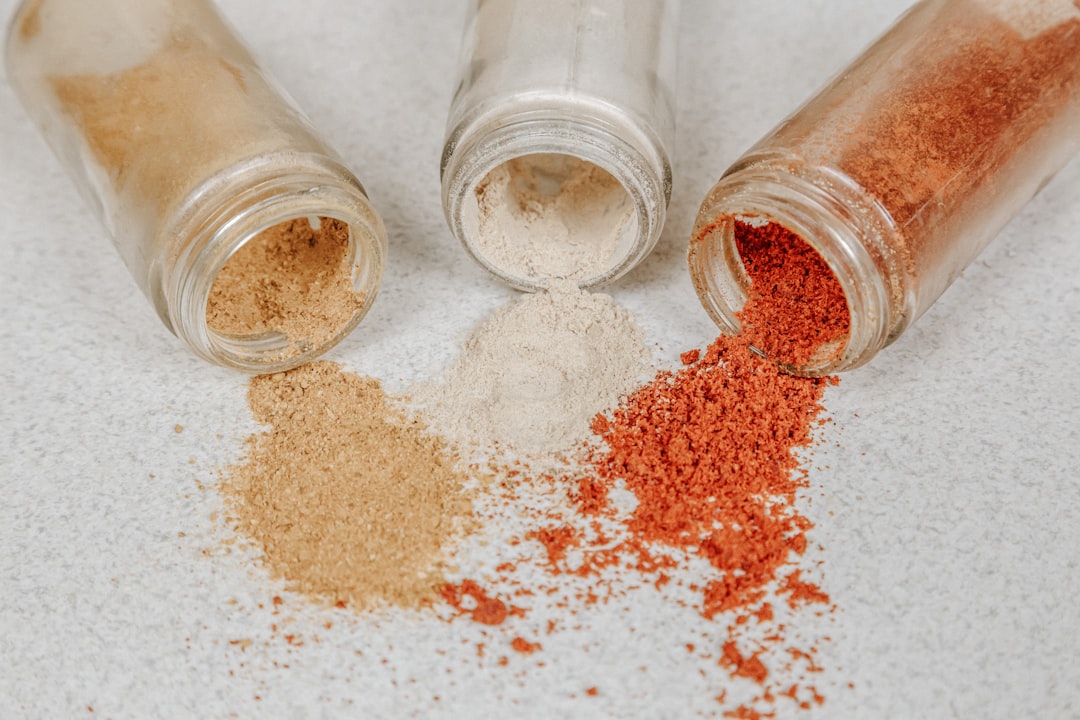Combination skin is a skin type that is characterized by having both oily and dry areas on the face. Typically, the T-zone (forehead, nose, and chin) tends to be oily, while the cheeks are dry. This can make finding the right skincare routine a bit challenging, as you need to address both oily and dry areas without exacerbating either condition. Understanding your skin type is crucial in order to choose the right products and treatments that will effectively balance and nourish your skin.
Combination skin can be influenced by a variety of factors, including genetics, hormones, and environmental factors. People with combination skin may find that their skin changes with the seasons, becoming oilier in the summer and drier in the winter. It’s important to pay attention to how your skin behaves in different conditions and adjust your skincare routine accordingly. By understanding the unique needs of combination skin, you can tailor your skincare routine to effectively address both oily and dry areas, leading to a healthier and more balanced complexion.
Summary
- Combination skin is characterized by having both oily and dry areas on the face, requiring a balanced skincare routine.
- When cleansing and exfoliating combination skin, it’s important to use gentle products that can effectively remove excess oil without stripping the skin of its natural moisture.
- Moisturising combination skin involves using lightweight, non-comedogenic products to hydrate the dry areas without clogging the oily areas.
- Treating acne and breakouts on combination skin requires targeted products that can address both the oily and dry areas without causing further imbalance.
- Sun protection for combination skin should involve using a broad-spectrum sunscreen with a lightweight, non-greasy formula to protect both the oily and dry areas from UV damage.
Cleansing and Exfoliating for Combination Skin
When it comes to cleansing combination skin, it’s important to use a gentle cleanser that effectively removes excess oil and impurities without stripping the skin of its natural moisture. Look for a cleanser that is formulated for combination skin or one that is gentle enough for all skin types. Avoid harsh cleansers that can further dry out the cheeks or exacerbate oiliness in the T-zone.
Exfoliation is also an important step in caring for combination skin. Exfoliating helps to remove dead skin cells and unclog pores, which can help to prevent breakouts and improve the overall texture of the skin. However, it’s important to exfoliate gently, as over-exfoliating can irritate the skin and worsen dryness or oiliness. Look for a gentle exfoliating scrub or a chemical exfoliant with ingredients like alpha hydroxy acids (AHAs) or beta hydroxy acids (BHAs) to effectively exfoliate without causing irritation.
Moisturising and Hydrating Combination Skin
Moisturising combination skin can be a bit tricky, as you need to find a balance between providing enough hydration for the dry areas without adding excess oil to the T-zone. Look for a lightweight, oil-free moisturiser that is formulated for combination skin. These types of moisturisers are designed to hydrate the skin without clogging pores or leaving a greasy residue. For the drier areas of the face, you may want to consider using a slightly richer moisturiser to provide extra hydration where it’s needed most.
In addition to moisturising, incorporating a hydrating serum into your skincare routine can help to replenish moisture and improve the overall texture of combination skin. Look for a serum that contains hyaluronic acid, which is known for its ability to attract and retain moisture in the skin. Using a hydrating serum before applying moisturiser can help to lock in moisture and keep the skin looking plump and hydrated throughout the day.
Treating Acne and Breakouts
Dealing with acne and breakouts can be a common concern for those with combination skin, as the oily T-zone is more prone to blemishes and congestion. When treating acne and breakouts on combination skin, it’s important to use products that target blemishes without drying out the rest of the face. Look for spot treatments or serums that contain ingredients like salicylic acid or benzoyl peroxide, which can help to unclog pores and reduce inflammation without causing excessive dryness.
In addition to targeted treatments, incorporating a gentle exfoliating acid into your skincare routine can help to prevent breakouts and improve the overall clarity of the skin. Exfoliating acids like salicylic acid or glycolic acid can help to unclog pores and remove dead skin cells, which can help to prevent blemishes from forming. However, it’s important to use exfoliating acids in moderation, as over-exfoliating can irritate the skin and worsen dryness or oiliness.
Sun Protection for Combination Skin
Sun protection is essential for all skin types, but it’s especially important for combination skin, as certain areas may be more prone to sun damage than others. When choosing a sunscreen for combination skin, look for a lightweight, non-comedogenic formula that won’t clog pores or leave a greasy residue on the skin. Opt for a broad-spectrum sunscreen with an SPF of 30 or higher to protect against both UVA and UVB rays.
In addition to using sunscreen, incorporating sun-protective clothing and accessories into your daily routine can help to further protect combination skin from sun damage. Wearing a wide-brimmed hat, sunglasses, and lightweight clothing that covers exposed areas can help to shield the skin from harmful UV rays. It’s also important to seek shade during peak sun hours and avoid prolonged sun exposure to minimise the risk of sun damage and premature ageing.
Makeup Tips for Combination Skin
When it comes to makeup for combination skin, it’s important to choose products that will help to balance and enhance the complexion without exacerbating oiliness or dryness. Start by using a mattifying primer on the T-zone to help control excess oil and minimise shine throughout the day. For the drier areas of the face, use a hydrating primer or a luminous primer to add moisture and create a smooth base for makeup application.
When choosing foundation for combination skin, look for a lightweight, oil-free formula that provides buildable coverage without clogging pores or accentuating dry patches. Liquid or powder foundations with a natural matte finish are ideal for combination skin, as they can help to control shine in the T-zone while providing a smooth, even complexion overall. Avoid heavy or thick foundations that can feel suffocating on the skin or emphasise dryness.
Professional Treatments for Combination Skin
In addition to a consistent at-home skincare routine, professional treatments can help to address specific concerns and improve the overall health of combination skin. Facial treatments like microdermabrasion, chemical peels, or laser therapy can help to exfoliate the skin, reduce congestion, and improve texture and tone. These treatments can be tailored to address both oily and dry areas of the face, providing targeted care for combination skin.
For those dealing with acne or breakouts, seeking professional help from a dermatologist or skincare specialist can provide access to treatments like extractions, LED therapy, or prescription medications that can effectively target blemishes without causing excessive dryness or irritation. Professional treatments can also help to address concerns like hyperpigmentation, fine lines, and dehydration, providing comprehensive care for combination skin.
In conclusion, caring for combination skin requires a balanced approach that addresses both oily and dry areas without exacerbating either condition. By understanding your unique skin type and its specific needs, you can tailor your skincare routine to effectively cleanse, exfoliate, moisturise, treat acne, protect from sun damage, apply makeup, and seek professional treatments that will promote a healthy and balanced complexion. With the right products and treatments, you can achieve radiant and harmonious skin that looks and feels its best every day.
Certainly! Here’s the paragraph with the tag included:
If you’re looking to achieve a natural glow without makeup, you’ll find some valuable tips in the article “How to Achieve a Natural Glow Without Makeup,” which complements The Ultimate Guide to Combination Skin Care. Additionally, if you’re interested in exploring the benefits of hyaluronic acid for hydration, you might want to read “La Roche-Posay Hyalu B5 Pure Hyaluronic Acid Serum: Hydration Hero or Hype?” for more insights. Furthermore, understanding the connection between skin and mental health is crucial, and the article “Skin-Mental Health Connection” delves into this topic, offering a holistic approach to skincare.
FAQs
What is combination skin?
Combination skin is a skin type that is characterized by having both oily and dry areas on the face. Typically, the T-zone (forehead, nose, and chin) is oily, while the cheeks are dry.
What are the common issues associated with combination skin?
Common issues associated with combination skin include enlarged pores, blackheads, acne, and occasional dryness or flakiness.
How should I cleanse combination skin?
It is important to use a gentle, pH-balanced cleanser that can effectively remove excess oil from the T-zone without drying out the cheeks. Look for a cleanser that is formulated for combination skin.
What moisturizer should I use for combination skin?
For combination skin, it is best to use a lightweight, oil-free moisturizer that can hydrate the dry areas without adding excess oil to the T-zone. Look for a moisturizer that is non-comedogenic and suitable for combination skin.
Should I use different products for the oily and dry areas of my skin?
Yes, it is recommended to use different products for the oily and dry areas of combination skin. This can help to effectively address the specific needs of each area without exacerbating the issues.
What ingredients should I look for in skincare products for combination skin?
Look for skincare products that contain ingredients such as hyaluronic acid, niacinamide, salicylic acid, and glycolic acid. These ingredients can help to hydrate the skin, control oil production, and exfoliate the skin without causing irritation.
How often should I exfoliate combination skin?
It is recommended to exfoliate combination skin 1-2 times per week. Exfoliating can help to remove dead skin cells, unclog pores, and improve the overall texture of the skin. Be cautious not to over-exfoliate, as this can lead to irritation and dryness.




